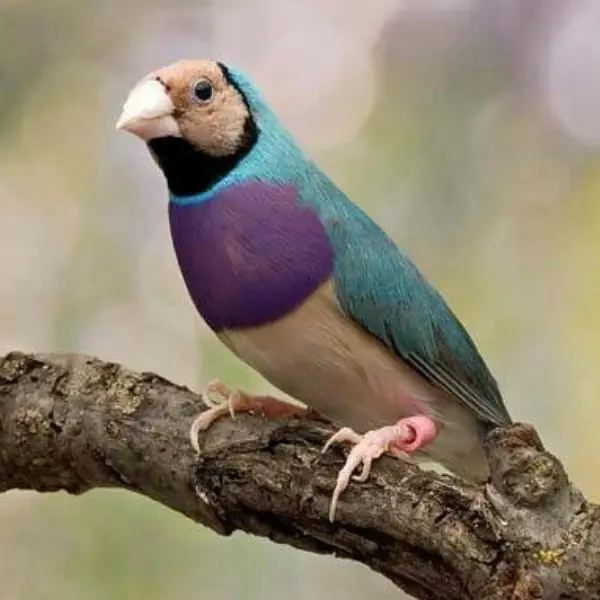Free shipping order over 20,000
Green-Cheeked Conure
₨ 18,500 Original price was: ₨ 18,500.₨ 15,000Current price is: ₨ 15,000.
-
- Scientific Name: Pyrrhura molinae
- Size: Approximately 26 cm (10 inches) in length.
- Color: The Green-Cheeked Conure has predominantly green plumage, with a slightly darker shade on the wings and back. The breast is a muted, grayish-green, often with a scalloped appearance. The tail feathers are maroon, and the flight feathers show a bright blue. The face and cheeks are typically olive green, with the forehead sometimes showing a hint of blue.
- Beak: Medium-sized, strong, and usually black in color, ideal for cracking seeds and nuts.
- Eyes: Dark brown or black, surrounded by a white, bare eye-ring that contrasts with the surrounding green feathers.
- Legs and Feet: Grayish or pinkish, with strong, zygodactyl toes (two toes facing forward and two backward) for gripping branches and perches.
SKU: REF. LA-5766-10-1-1-1-1-1-1-1-1-1-1-1-1-1-1-1-1-1-1-1-1-1-1-1-1-1-1
Categories: PARROTS, Uncategorized
Tag: parrots
Share
Share on facebook
Share on email
Important Keys:
Habitat
- Distribution: Native to South America, including Brazil, Bolivia, Argentina, and Paraguay.
- Environment: In the wild, they live in forests, woodlands, and savannas. They are often seen in the edges of forests or open areas with scattered trees. In captivity, they need spacious cages or aviaries that provide ample flying and climbing space.
Diet
- Primary Food: Seeds, nuts, and fruits make up the main diet. In captivity, they also eat high-quality pellets, fresh fruits, and vegetables.
- Supplementary Food: Grains, leafy greens, and occasional insects provide additional nutrition.
- Feeding Behavior: They are active foragers, climbing and using their beak to explore. They benefit from foraging toys and puzzles that simulate natural behaviors.
Breeding
- Breeding Season: Breeding generally occurs during the rainy season in the wild. In captivity, they can breed year-round if conditions are right.
- Nest Location: In the wild, they nest in tree cavities. In captivity, they use nest boxes with soft materials like shredded paper or wood chips.
- Egg Quantity: Clutches usually have 4-6 eggs.
- Incubation Period: About 23-26 days.
- Fledging: Chicks fledge around 7-8 weeks after hatching.
Lifespan
- In the Wild: Typically 10-15 years.
- In Captivity: Can live up to 20 years or more with proper care.
Behavior
- Social Structure: Green-Cheeked Conures are highly social and affectionate, thriving in the company of their own kind or humans. They form strong bonds with their caregivers and seek interaction.
- Vocalization: They produce a range of chirps, squawks, and whistles. While they can be noisy, they are generally quieter than many other parrot species.
- Personality: Known for their playful, curious, and intelligent nature, Green-Cheeked Conures enjoy interactive toys, climbing, and spending time with their owners. Their engaging personality makes them popular pets.
![]()
Be the first to review “Green-Cheeked Conure” Cancel reply
Related Products
-
-30%
Gray Shaft Tail
₨ 20,000Original price was: ₨ 20,000.₨ 14,000Current price is: ₨ 14,000. -
-25%
Silver Gouldian Finch
₨ 24,000Original price was: ₨ 24,000.₨ 18,000Current price is: ₨ 18,000. -
-20%
Common Gouldian Finch
₨ 12,500Original price was: ₨ 12,500.₨ 10,000Current price is: ₨ 10,000. -
-43%
Blue Gouldian Finch
₨ 35,000Original price was: ₨ 35,000.₨ 20,000Current price is: ₨ 20,000. -
-8%
Albino Cut-throat Finch
₨ 65,000Original price was: ₨ 65,000.₨ 60,000Current price is: ₨ 60,000. -
-20%
Red Eyes Bengalese
₨ 3,750Original price was: ₨ 3,750.₨ 3,000Current price is: ₨ 3,000. -
-20%
White Zebra Dove
₨ 43,750Original price was: ₨ 43,750.₨ 35,000Current price is: ₨ 35,000. -
-20%
Cape Dove
₨ 37,500Original price was: ₨ 37,500.₨ 30,000Current price is: ₨ 30,000.
Sign Up for Exclusive Birds Care Tips and Offers from Phool Panchi
Company links
Category
Contact
© 2024 Phool Panchi | Developed By v3Studio

















Reviews
There are no reviews yet.